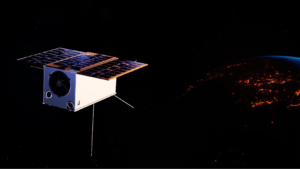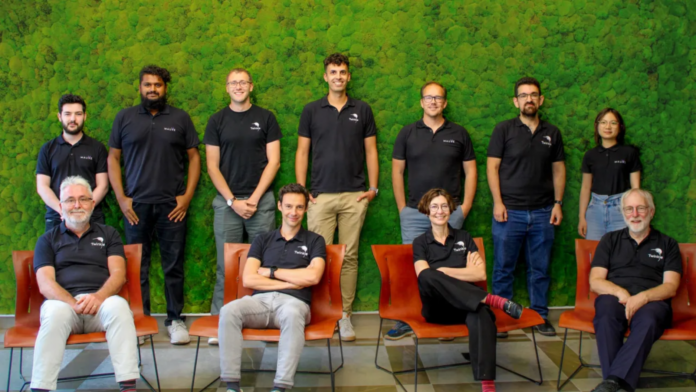Blue Skies Space, a pioneering UK-based startup, is set to launch its first satellite as part of SpaceX’s Transporter 15 rideshare program. This venture marks the beginning of a new era in space research, where astronomy data is collected, packaged, and sold as a service.
Blue Skies Space plans to launch its inaugural Mauve satellite in October 2025 using SpaceX’s Falcon 9 rocket. The Mauve satellite is designed to complement existing astronomical instruments like the Hubble Telescope, focusing on stellar spectroscopy. This technology captures the spectrum of light emitted by stars, revealing critical information such as star composition, temperature, density, mass, distance, and luminosity.
“Mauve is designed for long observation campaigns of hundreds of stars in our galaxy, aiding key research on stars,” says Marcell Tessenyi, CEO and co-founder of Blue Skies Space. The satellite’s capabilities will be instrumental in studying stellar flares, magnetic activity of exoplanet hosts, and the effects of UV radiation on photochemistry.

Unlike other companies that gather space data via ground-based telescopes or Earth observation satellites, Blue Skies Space differentiates itself by collecting data from space itself. They offer this data through a subscription-based membership model, which already includes prestigious institutions like Boston University and the National Astronomical Observatory of Japan. These early partners have helped shape the program design, influencing where and how long the Mauve satellite should observe specific regions of space.
“No private company is providing astronomy data as a service; we will be the first,” says Tessenyi. “We bring new science satellites and datasets to the community, making this accessible to anyone interested. This approach offers the scientific community greater agility and complements the large, high-capability facilities typically provided by government agencies.”
Since its inception, Blue Skies Space has raised approximately $6.5 million, with investments from U.K. seed fund SFC Capital, Japan’s Sparx Group, and grants from Europe’s Horizon R&D program.
Founded in 2014 by a team of academics, including Tessenyi, who holds a doctorate in astrophysics from University College London, Blue Skies Space has navigated the rigorous “standard mission proposal processes” with traditional space agencies. However, the rise of the “new space” industry—characterized by private companies commercializing space—has opened new opportunities for startups like Blue Skies Space.
“We spent years engaging with the global science community to validate our model and understand their data needs,” Tessenyi explains. “The evolution of the new space industry over the past decade has allowed us to find the right partners and team members to realize our vision.”
Rather than building its own satellites, Blue Skies Space collaborates with experienced manufacturers. Hungary’s C3S and Dutch company Isispace handle the engineering work for the Mauve satellite, with Blue Skies converting scientific requirements into technical specifications, including a 13cm telescope and a UV-visible spectrometer.
In parallel, Blue Skies is developing a second satellite, Twinkle, which will be constructed by Airbus. Twinkle will feature a larger telescope, a visible-IR spectrometer, and a Teledyne sensor, focusing on spectroscopic measurements of distant exoplanets’ atmospheres.
While details about the membership cost remain under wraps, Blue Skies promises to reveal this information soon. Despite their ambitious projects, Blue Skies operates with a lean team of just 12 employees based in the UK and Italy.
Blue Skies Space’s innovative approach to providing astronomy data as a service is set to revolutionize space research. By making high-quality astronomical data accessible to researchers worldwide, the company is poised to contribute significantly to our understanding of the universe.












